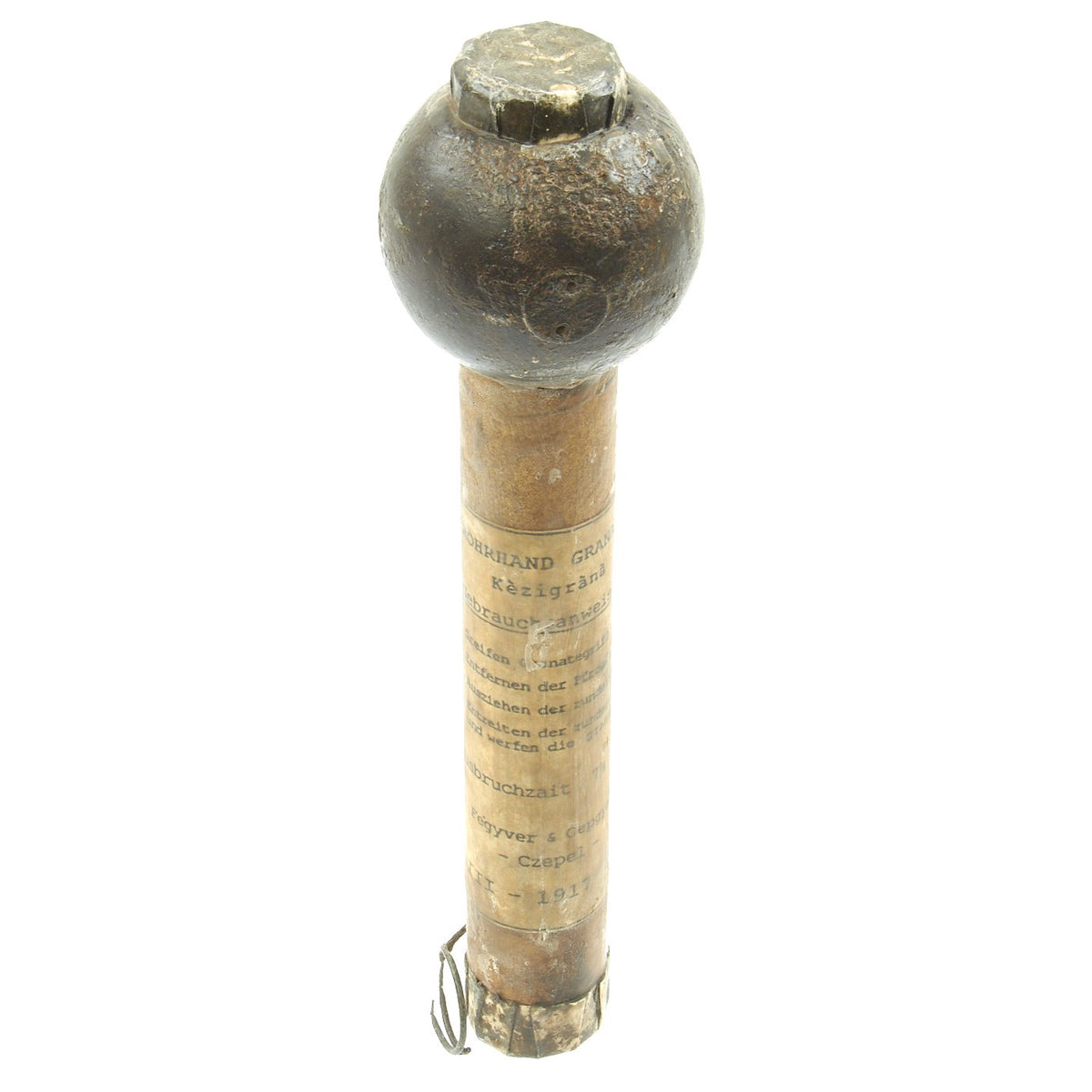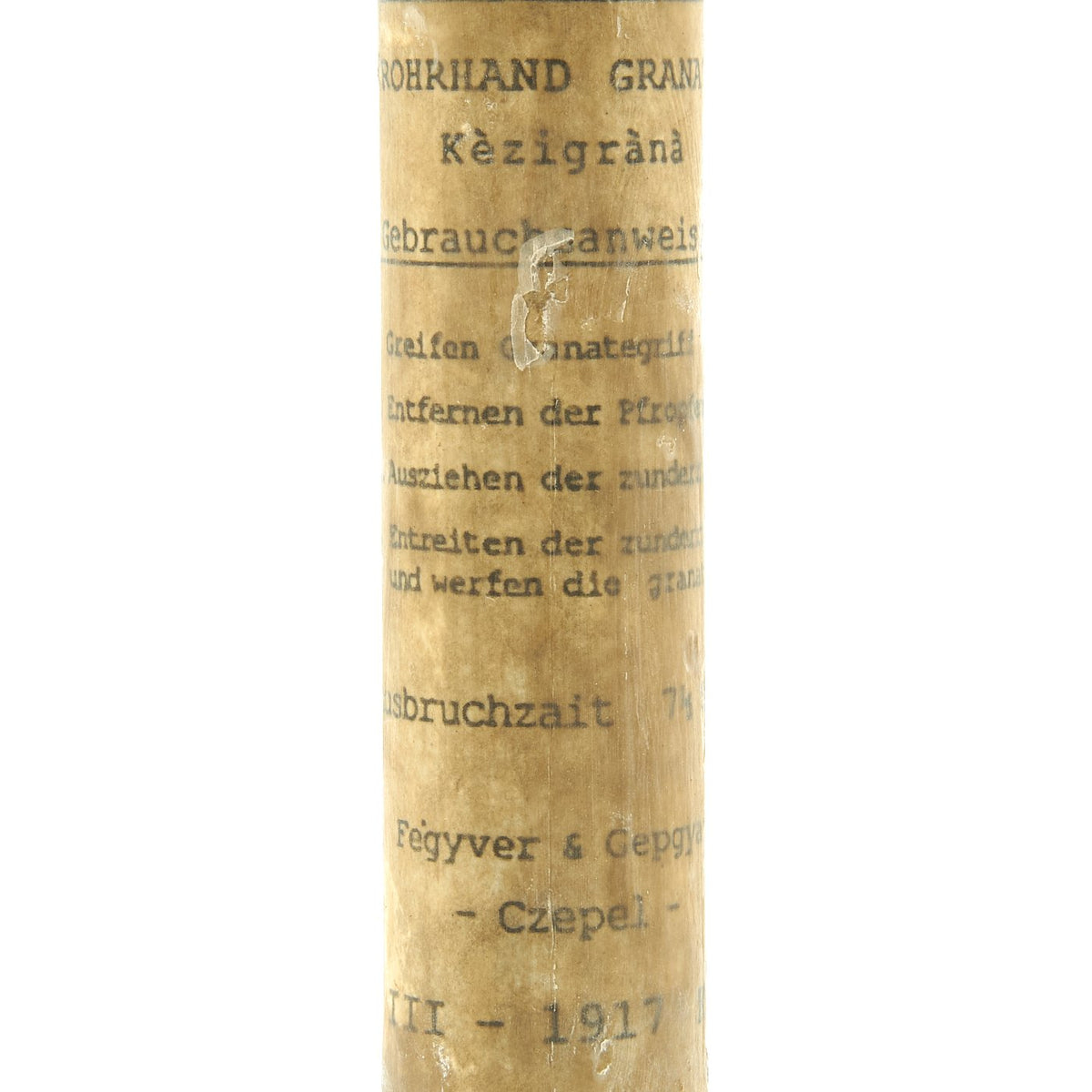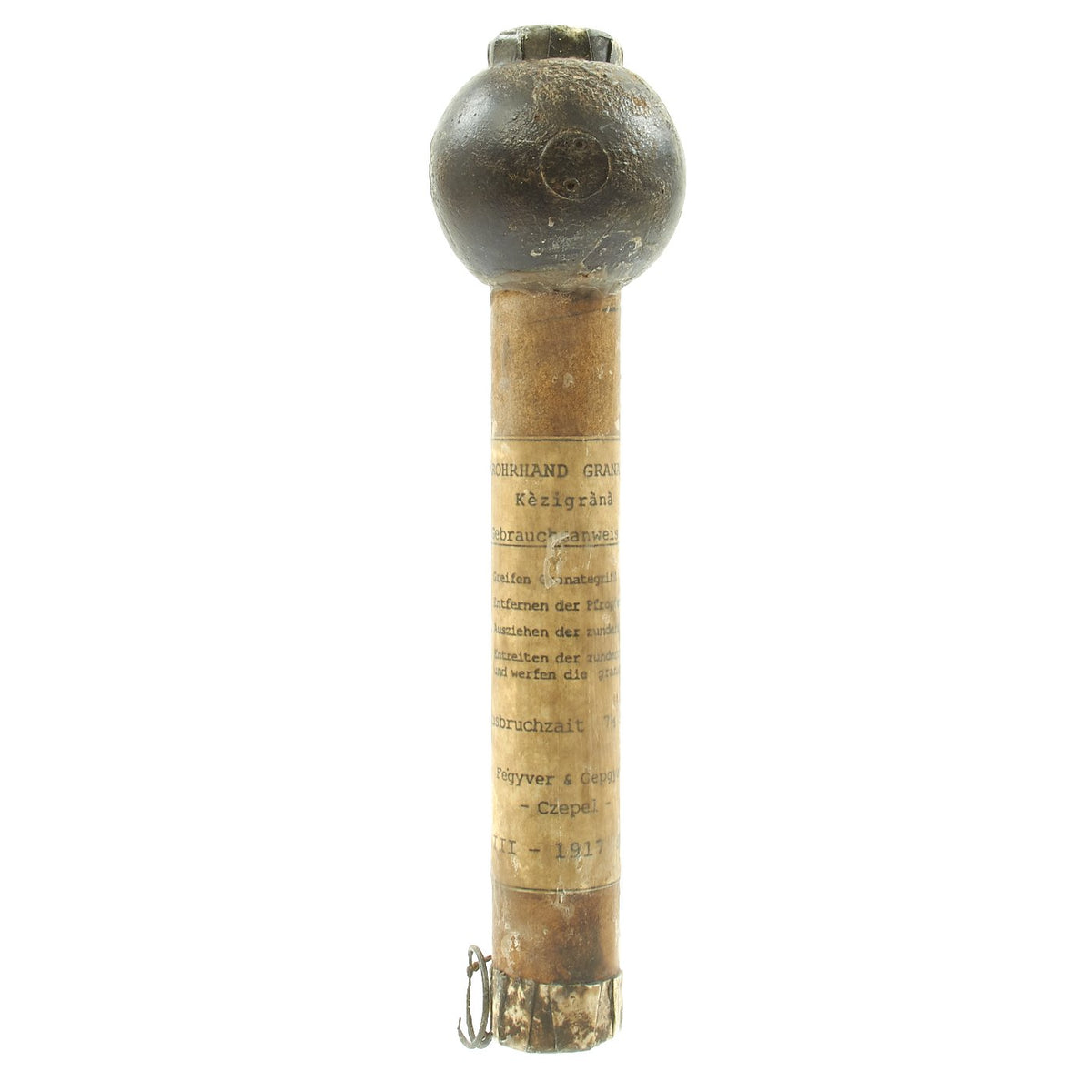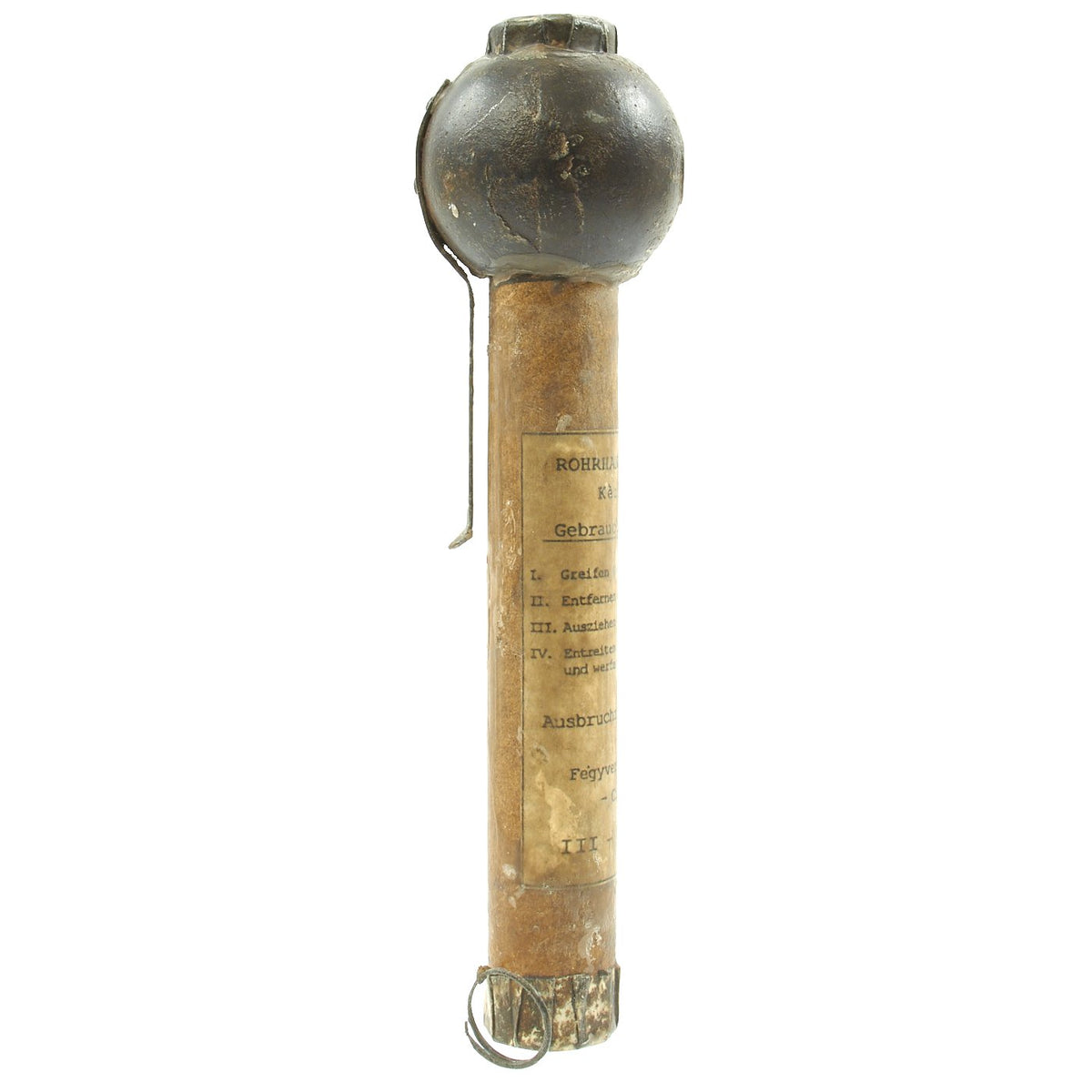Original Austro-Hungarian WWI Alt Rohrhandgranate Inert Stick Fragmentation Hand Grenade dated 1917 Original Items
$ 595,00 $ 178,50
Original Item: Only One Available. This is a totally inert BATF complaint Austro-Hungarian Rohrhandgranate (Pipe Hand Grenade) used during WWI, complete with an original label with a 1917 date. This is the rare alt (old) version with a ball-shaped head designed for fragmentation. The usual type found is the neu (new) type with the cylindrical head, which is the “high explosive” type. It is totally inert, cannot be converted to an explosive devise.
Many of the early hand grenades in use during the first few months of the war, across all the combatant nations, were improvised explosive devices, tins full of bits of metal or anything likely to cause damage, often attached to handles for easier throwing. The Austro-Hungarian Army was no different, but by the spring of 1915, these improvised hand grenades were being replaced by not only the German Stielhandgranate, which the Austrians soon began importing in large quantities, but by other Austrian-manufactured stick grenades, and in particular the “Pipe” hand grenade. This moniker refers to the cardboard pipe used as a handle for the grenade.
This first version of the Rohrhandgranate was designed very early in the war, with a round cast-iron body filled with steel balls, making it fairly heavy and unwieldy. The inside was filled with explosives as well, and was generally attached to a cardboard tube/pipe handle, again as opposed to the German Stielhandgranate with its wooden stick. We say generally because some photos we have seen appear to be Rohr grenades with wooden sticks, so we wouldn’t rule that out completely. Nonetheless, because the handles were generally made of cardboard, you simply don’t find many around today.
The ignition system was similar to the German Stielhandgranate, with a seven second delay fuse, and, other than the Stielhandgranate the Rohr grenade would become the standard Austro-Hungarian grenade of the Great War, though this was mainly the lighter new version with the cylinder warhead.
This example was recovered from a glacier region in Italy at the northern part of the Austro-Italian front, hence its remarkable condition, It retains its iron head with belt hook, original; cardboard handle with 1917 dated paper instruction/information label and original twine ignition cord to the interior.
It is offered in very good totally inert condition. Ready to display!
Fast Shipping with Professional Packaging
Thanks to our longstanding association with UPS FedEx DHL, and other major international carriers, we are able to provide a range of shipping options. Our warehouse staff is expertly trained and will wrap your products according to our exact and precise specifications. Prior to shipping, your goods will be thoroughly examined and securely secured. We ship to thousands clients each day across multiple countries. This shows how we're dedicated to be the largest retailer on the internet. Warehouses and distribution centres can be located throughout Europe as well as the USA.
Note: Orders with more than one item will be assigned a processing date depending on the item.
Before shipping before shipping, we'll conduct a thorough inspection of the items you have ordered. Today, the majority of orders will be delivered within 48 hours. The delivery time will be between 3-7 days.
Returns
The stock is dynamic and we cannot completely manage it because multiple stakeholders are involved, including our factory and warehouse. So the actual stock may alter at any time. It's possible that you may not receive your order once the order has been made.
Our policy is valid for a period of 30 days. If you don't receive the product within 30 days, we are not able to issue a refund or an exchange.
You can only return an item if it is unused and in the same state as the day you received it. You must have the item in its original packaging.
Related products
Uncategorized
Uncategorized
Uncategorized
Uncategorized
Uncategorized
Armoured Fighting Vehicles of the World: AFVs of World War One (Hardcover Book) New Made Items
Uncategorized
Uncategorized
Angolan Rebel 1970s era 60mm Inert Display Mortar from Angolan Civil War Original Items
Uncategorized
Uncategorized
Uncategorized
Australian WWII Owen MK1 Machine Carbine SMG Custom Fabricated Replica with Sling Original Items
Uncategorized
Uncategorized
Uncategorized
Uncategorized
Uncategorized
Uncategorized
Uncategorized
Uncategorized












































































